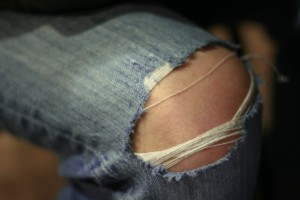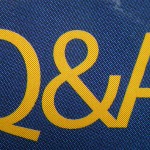 Knee pain is one of the most common orthopedic problems encountered and its rehabilitation depends on the history of its injury. The knee pain can either be chronic or caused by a sudden injury. Runners usually experience pain due to sprain after they run or jog. If it’s a sharp and sudden pain, this could be caused by a torn ligament and this needs an immediate medical response. Other times though, the injury is caused by strain and the treatment for this can start right at home. For strained knee, resting is the first step to take the strain off. Then, apply ice on the area for short intervals at a time, 15 minutes on and 45 minutes off for every waking hour. Do not apply ice for longer then 15 minutes as it could damage your skin and create a reverse effect. After icing the affected area, wrap it with a bandage for compression. Then, elevate the injured area as you rest it. These 4 steps are called the RICE or Rest, Ice, Compression & Elevation method. If following the RICE method does not work, you must see a medical professional for proper knee rehabilitation.
Knee pain is one of the most common orthopedic problems encountered and its rehabilitation depends on the history of its injury. The knee pain can either be chronic or caused by a sudden injury. Runners usually experience pain due to sprain after they run or jog. If it’s a sharp and sudden pain, this could be caused by a torn ligament and this needs an immediate medical response. Other times though, the injury is caused by strain and the treatment for this can start right at home. For strained knee, resting is the first step to take the strain off. Then, apply ice on the area for short intervals at a time, 15 minutes on and 45 minutes off for every waking hour. Do not apply ice for longer then 15 minutes as it could damage your skin and create a reverse effect. After icing the affected area, wrap it with a bandage for compression. Then, elevate the injured area as you rest it. These 4 steps are called the RICE or Rest, Ice, Compression & Elevation method. If following the RICE method does not work, you must see a medical professional for proper knee rehabilitation.
If the knee injury is not caused by strain, it can be caused by rheumatoid arthritis, osteoarthritis, or an injured ligament. If ever you notice stiffness after running, you may need to speak to a medical professional for a proper diagnosis. He will then perform physical examination and perhaps an x-ray or an MRI to see what’s really causing the problem.
If the pain is caused by an injured ligament, you will be prescribed to take proper rest and wearing of a brace. The knee brace is useful as it helps in preventing further injury to the knee which could definitely worsen the problem. The brace would be providing you with support that can reduce your discomfort while doing activities such as walking or while exercising for its rehabilitation. Brace is also used by professional athletes even when there’s no injury as this will prevent them from having the injury in the first place.
Osteoarthritis is unfortunately incurable. Anyone can suffer from this and it is similar to arthritis but affects the knee’s cartilage which then weakens the articulate surface. Treatment for this condition ranges from taking anti-inflammatory drugs to wearing of a knee brace and even surgery. Of course the severity of the condition is greatly considered before going to the last resort which is surgery.
Rheumatoid arthritis is not like the other forms of arthritis. This is caused by a disease in the auto immune system as the body attacks itself. Just like osteoarthritis, anyone can suffer from this, even children. It can be a hereditary disease and kids suffering from knee stiffness after running should consult a doctor. Treatments for this condition are with the use of a support and/or taking of medication.
At my clinic I use PT modalities (Electric Stimulation and Moist Heat combination, Ultrasound, Erchonia PL 5000 Cold Laser, Elastic Wrap, CMT (Certified Massage Therapy) and Manual Chiropractic Adjustment when applicable). Electric Stimulation helps to bring the pain level down in the first couple of week of the therapy and heat brings more blood to the injured area as well as allows it to be more relaxed for the next step. Next modalities are Ultrasound or Erchonia PL5000 Cold Laser. I alternate them with every other session. Next patient sees my CMT for 15 minutes only if there is mucle strain around injured knee. My massage therapist breaks the scar tissue down and moves injured knee through its natural Range of Motion. After massage I adjust knee’s patellar if tendonitis is present and wrap the knee with elastic wrap for a better support.
If you are diagnosed with any of the conditions above, your doctor would go for the most conservative treatment first. This means proper rehabilitation is the first option before they consider surgery. It is a last resort and cannot even guarantee success all the time.
Below is 3D MEDICAL ANIMATION – It is one of the best presentatons on Youtube.
Knee joint is the most complex articulation of the human body. It supports almost the entire body’s weight, while allowing wide flexion and extension movements together with rotation when the knee is in flexion. To accomplish these functional features it has a very complex anatomical structure.
Question: What did you do when you had knee injury? Was the treatment helpful?



